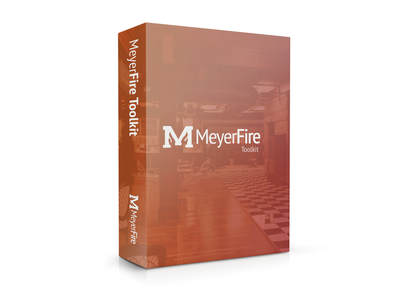|
Are there any requirements pertaining to mixing fire sprinkler k-factors or temperatures in the same room?
We often come across unit heater placement, so at least on the temperatures I suspect that mixing in the same room happens fairly commonly to accommodate heat sources. Posted anonymously by a member for discussion. Discuss this | Subscribe
7 Comments
Corey
2/14/2019 10:02:52 am
Yes, you can mix temperatures within the same area. See NFPA 13, 2016 edition 8.3.2.5 for more detail.
Reply
Dan W
2/14/2019 10:24:14 am
If you are using the different K-Factors to minimize over discharge a system, then not allowed (23.4.4.9.2-16'). 23.4.4.9.3 & 23.4.4.9.4 allows different orifices within small rooms (exposure protection & directional spray sprinklers) with the Annex explanation giving a little more insight.
Reply
PETE
2/14/2019 10:24:22 am
Mixing K-factors is acceptable, however, you will want to either designate areas that certain K-factors are to be used, or be very knowledgeable about fluid dynamics. If you have one K-factor in one area, and another K-factor in another area- both areas should be calculated. This also applies to standard and extended coverage in portions of systems.
Reply
PETE
2/14/2019 10:30:44 am
I should add, after reading DAN W's comment above: the example I gave was a directional nozzle deluge system for a pumping station near an exterior dock; in which non-flammable non-combustible liquids were being pumped- mainly ammonia.
Reply
ZS
2/14/2019 01:49:16 pm
Adding to what others have said.
Reply
Dan W
2/14/2019 05:52:42 pm
For the FR/QR/SR comment, it can be done in accordance with 8.3.3.5 '16. This has saved me on a couple of projects with EC sprinklers.
Reply
Franck Orset
2/19/2019 11:06:26 am
Mixing K-factor is not a good idea, unless you have good reasons for it (such as a deluge system where the K factor may different depending on the area for the entire surface coverage, but this is not a sprinkler system...).
Reply
Leave a Reply. |
ALL-ACCESSSUBSCRIBESubscribe and learn something new each day:
COMMUNITYTop June '24 Contributors
YOUR POSTPE EXAMGet 100 Days of Free Sample Questions right to you!
FILTERS
All
ARCHIVES
July 2024
PE PREP SERIES |
MeyerFire
- Blog
- Forum
-
THE TOOLKIT
- SUBMIT AN IDEA
- BACKFLOW DATABASE*
- CLEAN AGENT ESTIMATOR*
- CLOUD CEILING CALCULATOR
- DOMESTIC DEMAND*
- FIRE FLOW CALCULATOR*
- FIRE PUMP ANALYZER*
- FIRE PUMP DATABASE*
- FRICTION LOSS CALCULATOR
- HANGER SPACER*
- IBC TRANSLATOR*
- K-FACTOR SELECTOR*
- NFPA 13 EDITION TRANSLATOR ('19 ONLY)
- NFPA 13 EDITION TRANSLATOR ('99-'22)*
- LIQUIDS ANALYZER*
- OBSTRUCTION CALCULATOR
- OBSTRUCTIONS AGAINST WALL*
- PITOT CONVERTER
- PLUMBING FIXTURE COUNTS
- QUICK RESPONSE AREA REDUCTION
- REMOTE AREA ANALYZER*
- SPRINKLER DATABASE*
- SPRINKLER FLOW*
- SYSTEM ESTIMATOR*
- TEST & DRAIN CALCULATOR
- THRUST BLOCK CALCULATOR
- TRAPEZE CALCULATOR
- UNIT CONVERTER
- VOLUME & COMPRESSOR CALCULATOR
- WATER STORAGE*
- WATER SUPPLY (US)
- WATER SUPPLY (METRIC)
- UNIVERSITY
- PE Exam
- LOGIN
- PRICING
- OUR CAUSE

MeyerFire.com is a startup community built to help fire protection professionals shine.
Our goal is to improve fire protection practices worldwide. We promote the industry by creating helpful tools and resources, and by bringing together industry professionals to share their expertise.
MeyerFire, LLC is a NICET Recognized Training Provider and International Code Council Preferred Education Provider.
All text, images, and media Copyright © 2016-2024 MeyerFire, LLC
We respect your privacy and personal data. See our Privacy Policy and Terms of Service. The views, opinions, and information found on this site represent solely the author and do not represent the opinions of any other party, nor does the presented material assume responsibility for its use. Fire protection and life safety systems constitute a critical component for public health and safety and you should consult with a licensed professional for proper design and code adherence.
Discussions are solely for the purpose of peer review and the exchange of ideas. All comments are reviewed. Comments which do not contribute, are not relevant, are spam, or are disrespectful in nature may be removed. Information presented and opinions expressed should not be relied upon as a replacement for consulting services. Some (not all) outbound links on this website, such as Amazon links, are affiliate-based where we receive a small commission for orders placed elsewhere.













 RSS Feed
RSS Feed
